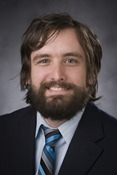Program Information
A Comprehensive Investigation of Noise Variations Between the GE Discovery CT750 HD and GE LightSpeed VCT
S Bache*, E Loyer , P Stauduhar , X Liu , J Rong , UT MD Anderson Cancer Center, Houston, TX
Presentations
SU-E-I-22 (Sunday, July 12, 2015) 3:00 PM - 6:00 PM Room: Exhibit Hall
Purpose: To quantify and compare the noise properties between two GE CT models- the Discovery CT750 HD (aka HD750) and LightSpeed VCT, with the overall goal of assessing the impact in clinical diagnostic practice.
Methods: Daily QC data from a fleet of 9 CT scanners currently in clinical use were investigated – 5 HD750 and 4 VCT (over 600 total acquisitions for each scanner). A standard GE QC phantom was scanned daily using two sets of scan parameters with each scanner over 1 year. Water CT number and standard deviation were recorded from the image of water section of the QC phantom. The standard GE QC scan parameters (Pitch = 0.516, 120kVp, 0.4s, 335mA, Small Body SFOV, 5mm thickness) and an in-house developed protocol (Axial, 120kVp, 1.0s, 240mA, Head SFOV, 5mm thickness) were used, with Standard reconstruction algorithm. Noise was measured as the standard deviation in the center of the water phantom image. Inter-model noise distributions and tube output in mR/mAs were compared to assess any relative differences in noise properties.
Results: With the in-house protocols, average noise for the five HD750 scanners was ~9% higher than the VCT scanners (5.8 vs 5.3). For the GE QC protocol, average noise with the HD750 scanners was ~11% higher than with the VCT scanners (4.8 vs 4.3). This discrepancy in noise between the two models was found despite the tube output in mR/mAs being comparable with the HD750 scanners only having ~4% lower output (8.0 vs 8.3 mR/mAs).
Conclusion: Using identical scan protocols, average noise in images from the HD750 group was higher than that from the VCT group. This confirms feedback from an institutional radiologist’s feedback regarding grainier patient images from HD750 scanners. Further investigation is warranted to assess the noise texture and distribution, as well as clinical impact.
Contact Email:


